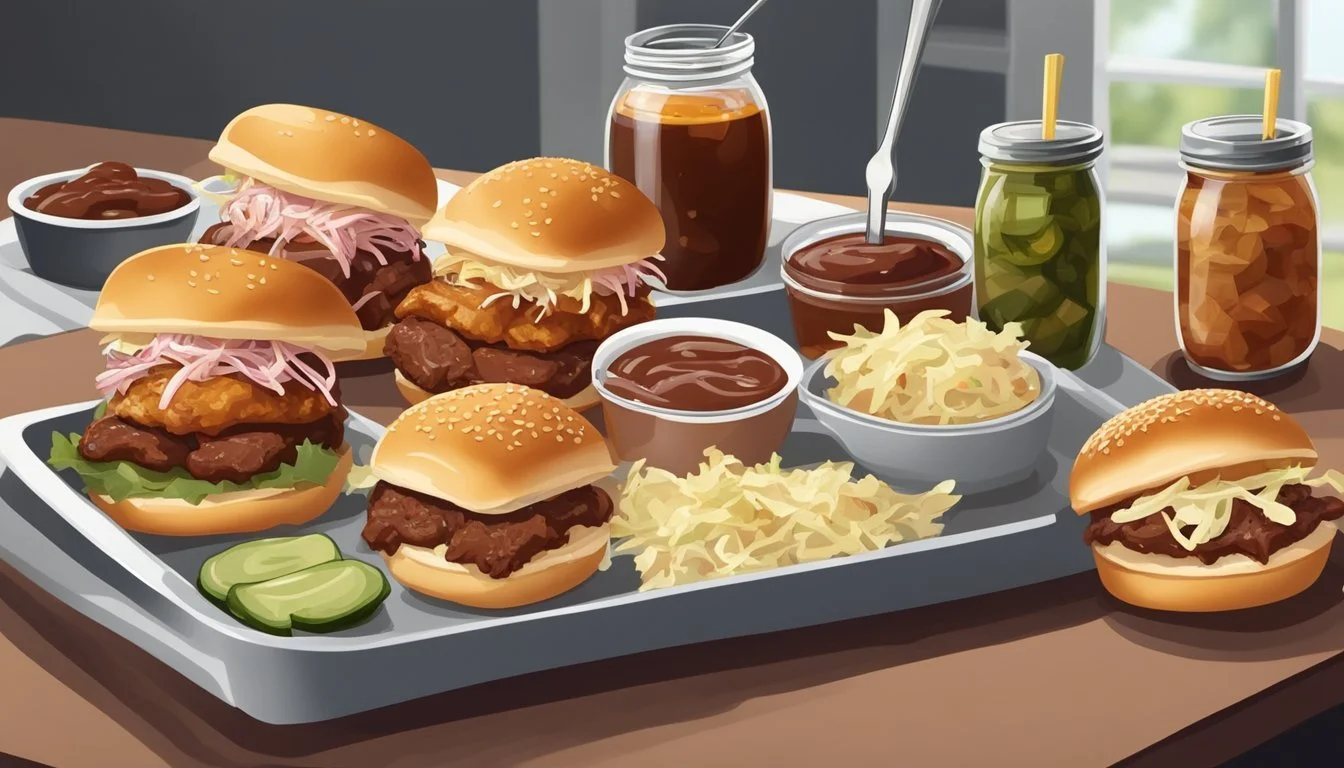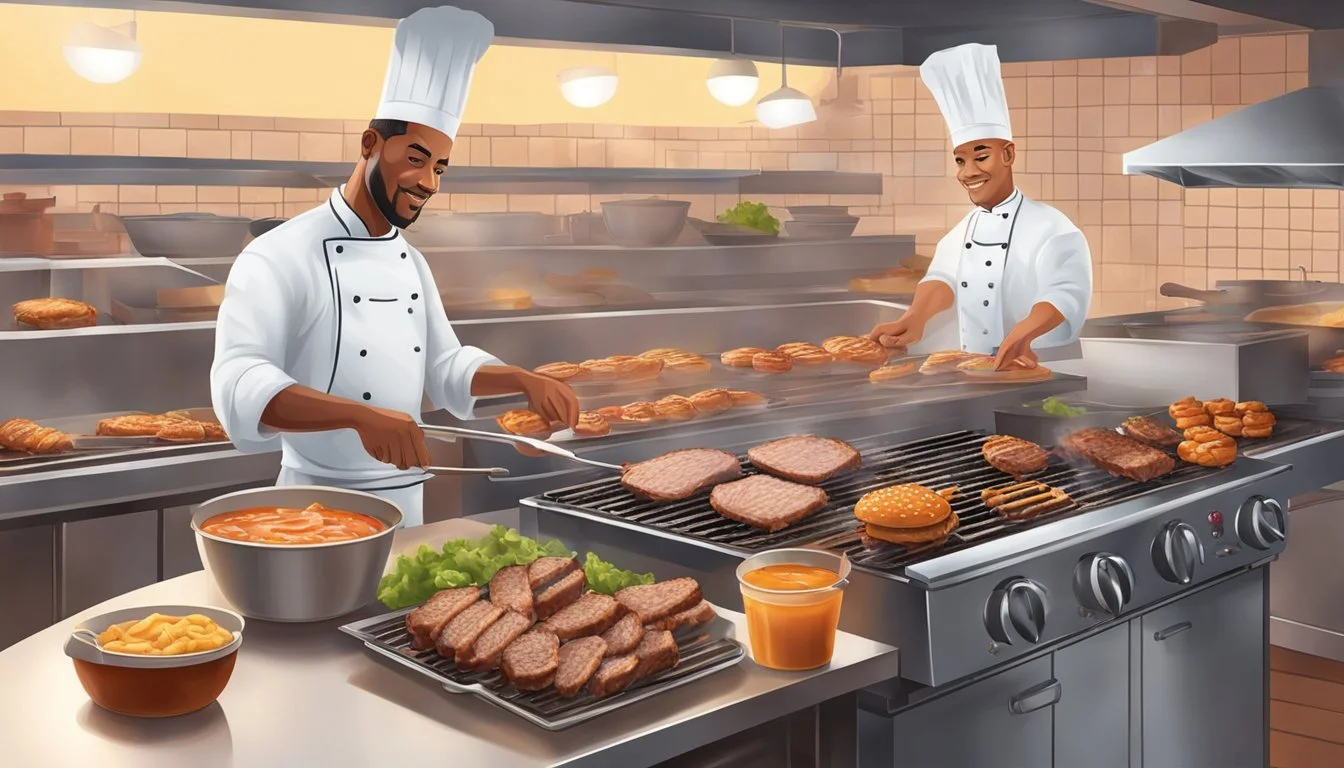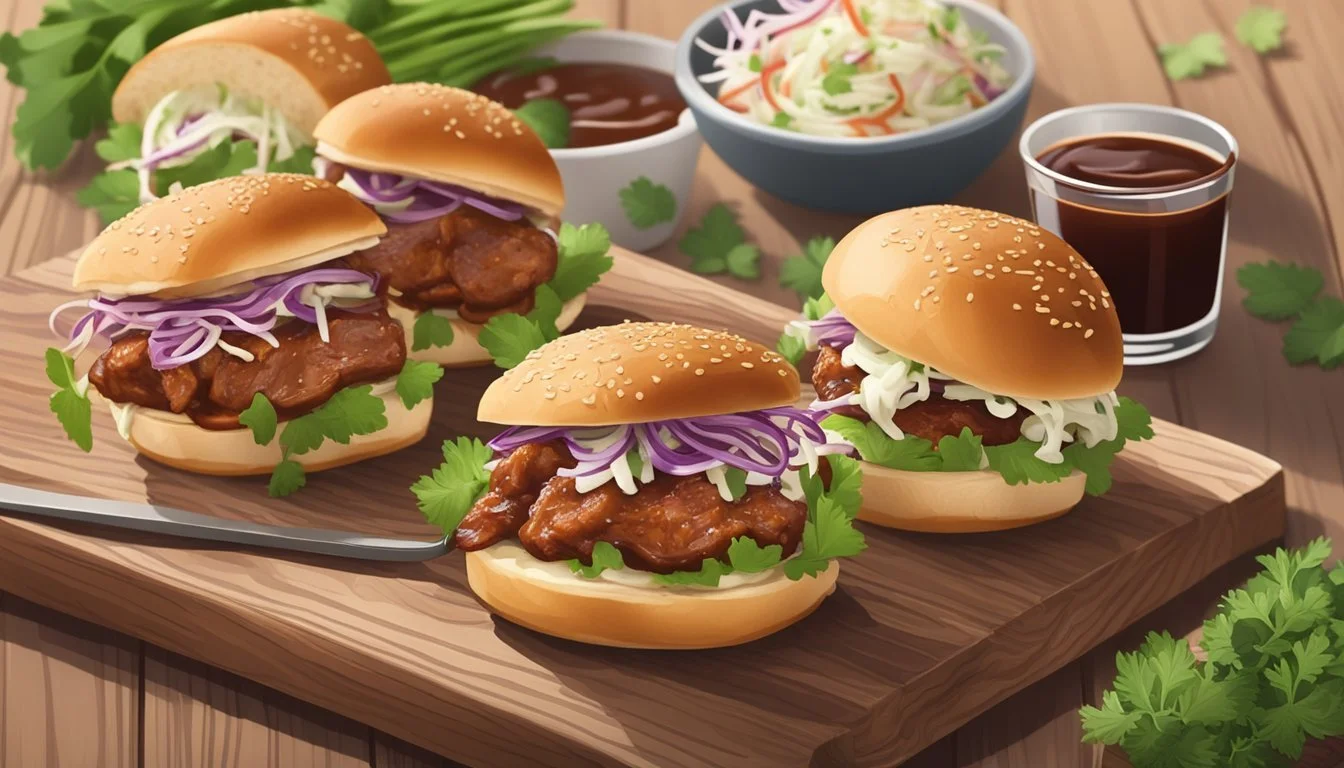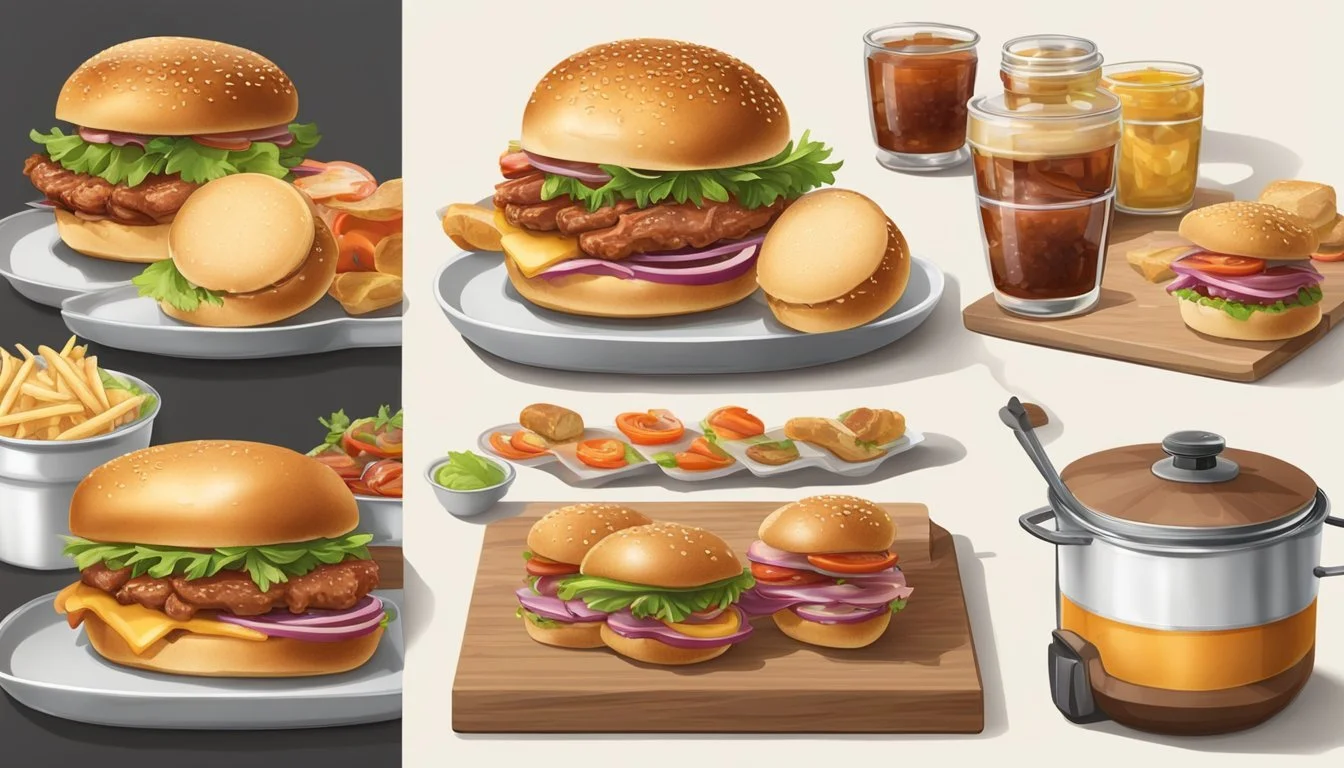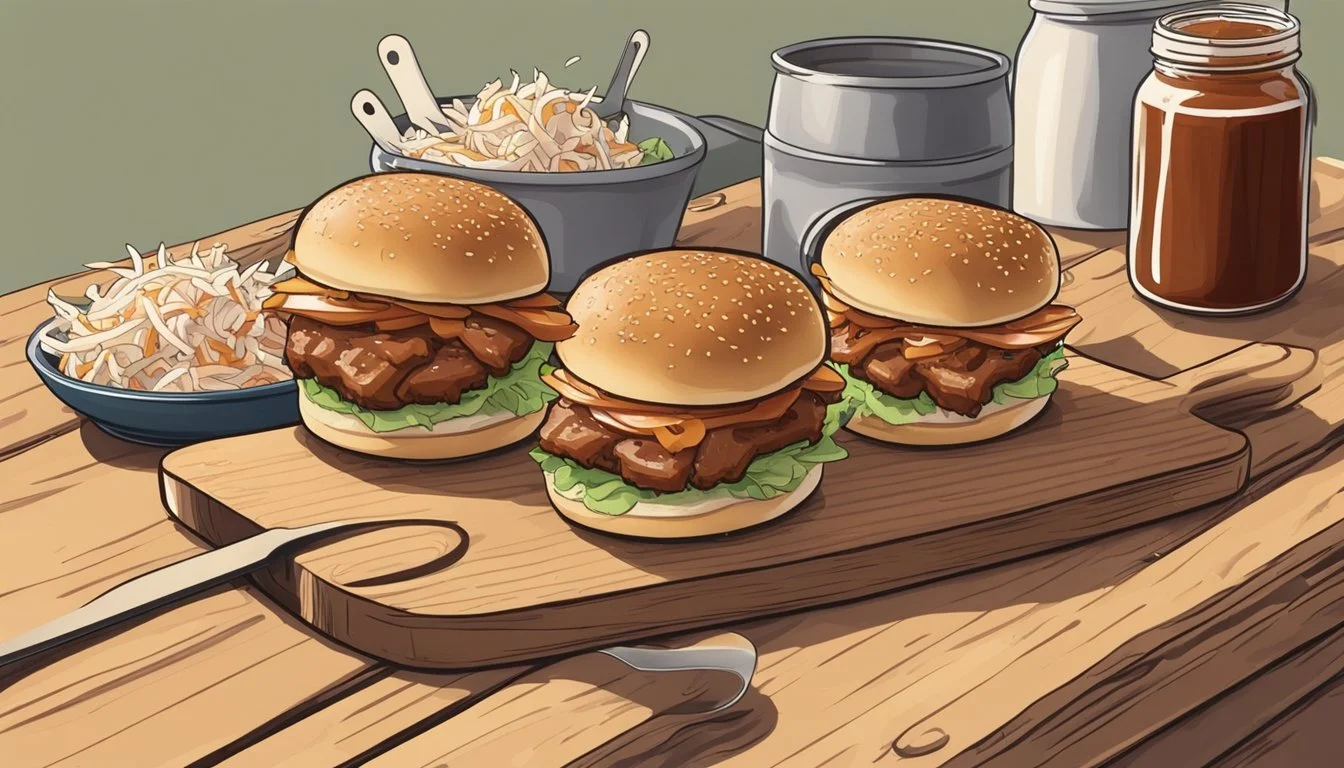How Long Do BBQ Pork Sliders Last?
Storage Tips and Shelf Life
BBQ pork sliders are a delectable and convenient option for parties and gatherings, but it's essential to know their shelf life to ensure food safety. Typically, BBQ pork sliders can last in the refrigerator for 3-4 days when stored in an airtight container. This time frame allows you to enjoy their flavorful goodness without compromising quality and safety.
Moreover, if you prefer to prepare them in advance or have leftovers, you can freeze BBQ pork sliders. Stored properly in a freezer-safe container or tightly wrapped in aluminum foil, they can last up to three months. Thaw them in the refrigerator overnight before reheating for the best taste and texture.
Being mindful of these storage guidelines ensures that your sliders are not only delicious but also safe to consume. Whether for a quick snack or a planned event, knowing how to store your BBQ pork sliders effectively keeps them fresh and enjoyable.
Essentials of BBQ Pork Sliders
BBQ pork sliders are a popular, flavorful choice for gatherings and meals.
Ingredients
Pulled Pork: Typically made from pork shoulder, cooked until tender.
BBQ Sauce: Sweet and tangy sauce mixed with the shredded pork.
Slider Buns: Hawaiian rolls or other small buns are ideal.
Coleslaw: Can add a crunchy texture and balance the richness.
Pickles and Onions: Optional toppings for added flavor.
Preparation
To prepare BBQ pork sliders, start by making or heating pulled pork and mixing it with BBQ sauce. The meat should be warm and well-coated with the sauce.
Steps:
Warm the pulled pork with BBQ sauce in a saucepan or microwave.
Toast the slider buns in a preheated oven (350°F) for a few minutes.
Place warm pork mixture on the bottom half of the buns.
Add coleslaw, pickles, and onions if desired.
Top with the other half of the slider buns.
Serving Ideas
BBQ pork sliders are perfect for:
Parties: Easy to serve and eat.
Family Dinners: Quick to prepare, and kids love them.
Buffets and Potlucks: Can be kept warm in a slow cooker.
Storage
Leftovers: Store any leftover pulled pork in an airtight container in the refrigerator for up to three days. Keep slider buns separate to avoid sogginess. Reheat the pork and assemble sliders just before eating.
Preparation and Cooking
Proper preparation and cooking are crucial for achieving delicious BBQ pork sliders. Key aspects include selecting the finest ingredients and utilizing effective cooking techniques to ensure the pork is tender and flavorful.
Selecting Ingredients
Choosing the right ingredients lays a strong foundation for your BBQ pork sliders. Opt for a pork shoulder or butt, as these cuts are well-marbled and become tender when cooked slowly. For seasoning, a blend of garlic powder, onion powder, smoked paprika, chili powder, cumin, salt, and pepper creates a rich, savory rub.
BBQ sauce is another essential component; ensure it complements the pork's flavor without overpowering it. Apple cider vinegar can add a tangy note, while sugar and apple slices can balance the acidity. For toppings, consider coleslaw for a crunchy contrast and cheese if desired. Each element should enhance the overall dish.
Cooking Techniques
Various cooking methods yield tender, flavorful pulled pork. The slow cooker or crockpot method involves cooking the pork on low for 7-8 hours with onion, garlic, and a splash of vinegar or apple cider vinegar for moisture. This long, slow cooking process ensures the pork becomes fall-apart tender.
The instant pot offers a faster alternative, reducing cooking time to about an hour. It effectively locks in flavors while maintaining moisture.
For a crispy exterior, consider finishing the pulled pork in an air fryer after slow cooking. This step adds a delightful texture without drying out the meat. Once cooked, the pork is shredded and mixed with BBQ sauce, ready to be assembled into sliders along with toppings like coleslaw and cheese.
Assembling the Sliders
When assembling BBQ pork sliders, organization and preparation are key. This step-by-step guide ensures that all ingredients are layered correctly and offers variations to please different palates.
Layering the Sliders
Start by slicing Hawaiian rolls or slider rolls in half horizontally. Apply a thin layer of mayo or butter on the inside of both halves. This adds flavor and prevents the bread from becoming soggy.
Begin with the bottom half of the roll. Layer the shredded BBQ pork evenly. Avoid overpacking to ensure each bite includes all ingredients.
Add toppings in the following order for balanced flavors:
BBQ Sauce.
Coleslaw for crunch and tang.
Cheddar Cheese for a creamy texture. Melt slightly if desired.
Optional pickle slices for an additional tangy kick.
Cover with the top half of the roll, pressing gently to adhere together. If preferred, wrap each slider in foil and warm in an oven at 350°F for a few minutes to meld flavors.
Slider Variations
For those seeking alternatives, numerous slider variations exist. Pulled pork quesadillas use tortilla wraps as a fun twist on the traditional slider.
Consider using different meats for variety:
BBQ chicken: Substitute chicken for pork.
Philly cheesesteak: Thinly sliced beef with grilled onions and peppers.
Turkey and cheese: Thinly sliced roast turkey with cheddar.
Roast beef: Roast beef with horseradish sauce.
Switch up the bread by using Hawaiian buns for a sweeter profile or traditional slider rolls for a classic taste.
Experiment with condiments and toppings like jalapenos, sautéed onions, or different cheeses. Customizing sliders makes them versatile for any occasion.
Serving and Presentation
When serving BBQ pork sliders, attention to side dishes, toppings, condiments, and creative event presentations can make a significant difference. Choose complementary items that enhance flavor and convenience.
Side Dishes
For an unforgettable meal, pair BBQ pork sliders with classic sides. Coleslaw mix provides a refreshing crunch that complements the tender pulled pork. Baked beans add a hearty, savory element, while corn on the cob offers sweetness and texture.
Other great choices include pasta salad, which can be prepared with fresh vegetables and a light dressing, and potato salad, which adds a creamy contrast to the sliders. Potato chips or fries are also fantastic, adding a satisfying crispness to the plate.
Toppings and Condiments
Toppings and condiments are essential for adding flavor layers to BBQ pork sliders. BBQ sauce is an obvious choice, enhancing the smoky tang of the pork. Other condiments like mayonnaise, Dijon mustard, and Worcestershire sauce bring more depth and variety.
For toppings, consider pickles and jalapenos to add a zingy kick. French fried onions offer a delightful crunch. Serving a variety of these options allows guests to customize their sliders to their taste.
Serving Ideas for Events
When hosting events like game day, tailgating, or parties, presentation can elevate the experience. Serve BBQ pork sliders on a large platter or in a buffet-style setup, allowing guests to help themselves.
Consider using Hawaiian rolls for a sweet contrast to the savory pork. Label condiments and side dishes clearly to avoid confusion. For outdoor events, using disposable trays and utensils can simplify cleanup. Arrange sliders and sides in a visually appealing manner to make the spread inviting and memorable.
Storage and Shelf Life
BBQ pork sliders can be enjoyed for a few days if stored correctly. Proper storage involves refrigeration for shorter periods and freezing for more extended preservation.
Refrigerating
Refrigerate BBQ pork sliders as soon as possible to extend their shelf life. Place the sliders in an airtight container or wrap them tightly with plastic wrap. When stored at a refrigerator temperature of 40°F (4°C) or below, BBQ pork sliders can last for about 3 to 4 days. Ensure the sliders are not left at room temperature for more than two hours to prevent bacterial growth.
Freezing and Reheating
For longer storage, freezing is an excellent option. Freeze BBQ pork sliders individually wrapped in heavy-duty aluminum foil or placed in freezer-safe containers or bags. Label them with the date they are stored. When properly frozen at 0°F (-18°C) or lower, the sliders can last up to 2-3 months. Reheat frozen sliders by thawing them in the refrigerator overnight, then warming them in the oven at 350°F (175°C) until they reach an internal temperature of 165°F (74°C).
Safety Considerations
Food safety is paramount when storing and handling BBQ pork sliders. Always refrigerate or freeze leftovers within two hours of cooking. Use a food thermometer to ensure that reheated sliders reach an internal temperature of 165°F (74°C). Discard any sliders that have been left out for more than two hours to avoid the risk of foodborne illnesses. Keep the storage containers clean and ensure they are sealed properly to maintain the quality and safety of your leftovers.
Customization and Alternatives
One of the great advantages of BBQ pork sliders is the variety of ways they can be customized to fit dietary needs and taste preferences. Options range from different types of meats to various cheeses and toppings, as well as homemade additions.
Dietary Adaptations
BBQ pork sliders can be adapted to fit various dietary requirements. Gluten-free buns are a great substitute for traditional slider buns for those with gluten sensitivity. Low-carb or keto enthusiasts might prefer using lettuce wraps or low-carb buns. Pulled chicken or pulled pork can be used depending on meat preferences, providing flexibility for those who prefer poultry.
Including different cheeses such as mozzarella, pepper jack, or sharp cheddar also allows for personalization without compromising dietary goals.
Alternative Ingredients and Condiments
There are numerous alternative ingredients and condiments to make sliders unique. Substituting pulled pork with beef or pulled chicken can cater to different tastes. Various cheeses like havarti or sharp cheddar can change the flavor profile.
Buns such as brioche or Hawaiian rolls bring a different texture and taste. BBQ sauce or other barbecue sauces can be varied, and additions like bacon and coleslaw create new flavors. Using drinks like root beer for tenderizing meat can add a subtle sweetness.
Homemade Additions
Homemade additions can elevate BBQ pork sliders to new heights. Homemade coleslaw made from fresh cabbage, carrots, and a tangy dressing adds a crunchy texture. Unique spice blends including sea salt and black pepper can tailor the taste further.
Creating homemade sauces can also add a personal touch. For instance, mixing store-bought BBQ sauce with some honey or apple cider vinegar gives a bespoke flavor. Serving sliders with sides like a creamy potato casserole can provide a complete, satisfying meal.
Practical Tips and Tricks
To ensure your BBQ pork sliders are delicious and last as long as possible, it's essential to focus on efficient assembly and enhancing the flavor through key ingredients and proper preparation methods.
Efficient Assembly
Using a serrated knife to slice the rolls ensures clean cuts that prevent tearing. Arrange the bottom halves on a baking sheet lined with parchment paper. This step minimizes clean-up time after assembly.
For optimum consistency, ensure the pork is well-shredded. Using a combination of hands and forks helps achieve this. Place a generous amount of pulled pork on each bottom half, then add the tops.
Applying melted butter over the tops of the sliders using a brush helps them achieve a golden-brown finish. This step also seals the rolls, maintaining their freshness for longer. Covering the sliders with foil before baking keeps them moist.
Enhancing Flavor
A mix of brown sugar, paprika, cumin, and other herbs and spices for a dry rub enhances the pork's natural flavors. Including a splash of root beer or Dr. Pepper in the cooking liquid adds a subtle sweetness and depth.
Melted butter with poppy seeds or celery seeds brushed on top adds texture and a slight crunch. Preparing the sliders on Hawaiian rolls introduces a slight sweetness that pairs well with the savory pulled pork.
To add complexity, let the pork sit overnight with the dry rub, allowing the flavors to penetrate deeply. Smoking the pork for 8-12 hours ensures a tender, flavorful result that will make each bite memorable.
FAQs and Troubleshooting
Ensuring your BBQ pork sliders are delicious and safe to eat involves understanding ingredient substitutions, using the right cooking equipment, and handling leftovers properly.
Common Ingredient Substitutions
Sometimes, you might not have all the ingredients on hand. Apple cider vinegar can be a substitute for regular vinegar in the BBQ sauce, adding a tangy flavor. For an extra layer of flavor, try mixing different cheeses like mozzarella or cheddar. When you're out of fresh garlic, garlic powder can work in a pinch. If onion isn't available, shallots offer a good alternative, though they'll impart a slightly different taste. Butter can be replaced with margarine or olive oil in most recipes, impacting texture and flavor slightly.
Cooking Equipment Alternatives
Not everyone has a slow cooker or crockpot. An oven can be an effective alternative; just adjust the temperature to around 300°F (150°C) and ensure the pork is covered to retain moisture. An air fryer can also be used for smaller batches, providing a crispy exterior. For stovetop cooking, a heavy-bottomed pot or Dutch oven works well, though it will require more attention to avoid burning.
Addressing Leftover Challenges
Properly storing and reheating leftovers ensures the BBQ pork sliders stay fresh. Leftovers can be kept in the refrigerator for up to 3-4 days. When reheating, using an oven or air fryer helps retain the texture better than a microwave, which can make the bread soggy. If you need to freeze leftovers, ensure they're tightly wrapped or placed in airtight containers. Before reheating frozen sliders, thaw them in the refrigerator overnight to maintain quality. Handling leftovers with care minimizes food safety risks and keeps them just as enjoyable as when first prepared.


